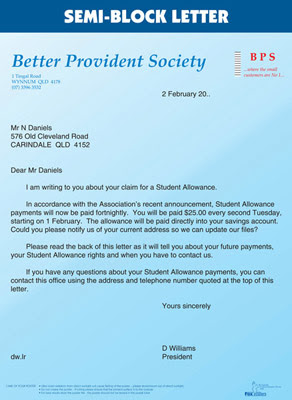Tugas individu
Nama : Larasati Hendro A. P
NPM : 24112163
Dosen : Mahisa Ajy Kusuma
Mata Kuliah : Kewirausahaan Teknologi Informasi
1. Sebutkan dan jelaskan jenis jenis badan usaha di indonesia
Badan usaha adalah kesatuan yuridis (hukum), teknis, dan ekonomis yang bertujuan mencari laba atau keuntungan. Badan Usaha seringkali disamakan dengan perusahaan, walaupun pada kenyataannya berbeda. Perbedaan utamanya, Badan Usaha adalah lembaga sementara perusahaan adalah tempat dimana Badan Usaha itu mengelola faktor-faktor produksi.
Koperasi
Koperasi adalah badan usaha yang berlandaskan asas-asas kekeluargaan.
BUMN
Badan Usaha Milik Negara (BUMN) ialah badan usaha yang permodalannya seluruhnya atau sebagian dimiliki oleh Pemerintah. Status pegawai badan usaha-badan usaha tersebut adalah karyawan BUMN bukan pegawai negeri. BUMN sendiri sekarang ada 3 macam yaitu Perjan, Perum dan Persero.
Perjan
Perjan adalah bentuk badan usaha milik negara yang seluruh modalnya dimiliki oleh pemerintah. Perjan ini berorientasi pelayanan pada masyarakat, Sehingga selalu merugi. Sekarang sudah tidak ada perusahaan BUMN yang menggunakan model perjan karena besarnya biaya untuk memelihara perjan-perjan tersebut sesuai dengan Undang Undang (UU) Nomor 19 tahun 2003 tentang BUMN. Contoh Perjan: PJKA (Perusahaan Jawatan Kereta Api) kini berganti menjadi PT.KAI
Perum
Perum adalah perjan yang sudah diubah. Tujuannya tidak lagi berorientasi pelayanan tetapi sudah profit oriented. Sama seperti Perjan, perum di kelola oleh negara dengan status pegawainya sebagai Pegawai Negeri. Namun perusahaan masih merugi meskipun status Perjan diubah menjadi Perum, sehingga pemerintah terpaksa menjual sebagian saham Perum tersebut kepada publik (go public) dan statusnya diubah menjadi persero.
Persero
Persero adalah salah satu Badan Usaha yang dikelola oleh Negara atau Daerah. Berbeda dengan Perum atau Perjan, tujuan didirikannya Persero yang pertama adalah mencari keuntungan dan yang kedua memberi pelayanan kepada umum. Modal pendiriannya berasal sebagian atau seluruhnya dari kekayaan negara yang dipisahkan berupa saham-saham. Persero dipimpin oleh direksi. Sedangkan pegawainya berstatus sebagai pegawai swasta. Badan usaha ditulis PT < nama perusahaan > (Persero). Perusahaan ini tidak memperoleh fasilitas negara. Jadi dari uraian di atas, ciri-ciri Persero adalah:
▪ Tujuan utamanya mencari laba (Komersial)
▪ Modal sebagian atau seluruhnya berasal dari kekayaan negara yang dipisahkan yang berupa saham-saham
▪ Dipimpin oleh direksi
▪ Pegawainya berstatus sebagai pegawai swasta
▪ Badan usahanya ditulis PT (nama perusahaan) (Persero)
▪ Tidak memperoleh fasilitas negara
Contoh perusahaan yang mempunyai badan usaha Persero antara lain:
▪ PT Bank Rakyat Indonesia (Persero) Tbk.
▪ PT Bank Mandiri (Persero) Tbk.
▪ PT Brantas Abipraya (Persero)
▪ PT Garuda Indonesia (Persero)
▪ PT Angkasa Pura (Persero)
▪ PT Perusahaan Pertambangan dan Minyak Negara (Persero)
▪ PT Tambang Bukit Asam (Persero)
▪ PT Aneka Tambang (Persero)
▪ PT Pelayaran Nasional Indonesia (Persero)
▪ PT Perusahaan Listrik Negara (Persero)
▪ PT Pos Indonesia (Persero)
▪ PT Kereta Api Indonesia (Persero)
▪ PT Adhi Karya (Persero)
▪ PT Perusahaan Listrik Negara (Persero)
▪ PT Perusahaan Perumahan (Persero)
▪ PT Waskita Karya (Persero)
▪ PT Telekomunikasi Indonesia (Persero)
BUMS
Badan Usaha Milik Swasta atau BUMS adalah badan usaha yang didirikan dan dimodali oleh seseorang atau sekelompok orang. Berdasarkan UUD 1945 pasal 33, bidang- bidang usaha yang diberikan kepada pihak swasta adalah mengelola sumber daya ekonomi yang bersifat tidak vital dan strategis atau yang tidak menguasai hajat hidup orang banyak.
sumber :
Kraakman, Reinier H.; et al. (2004). Anatomy of Corporate Law: A Comparative and Functional Approach. New York: Oxford University Press. ISBN 0-19-926063-X.
2. Jelaskan prosedur dan legalitas pendirian badan usaha tersebut
Prosedur dan Legalitas adalah sebuah aturan atau syarat yang harus dipenuhi oleh setiap orang ataupun kelompok yang ingin membangun atau membentuk suatu badan usaha, baik pribadi, umum, ataupun korporasi. Dibawah ini akan saya berikan beberapa syarat atau prosedur dan legalitas yang harus dipenuhi.
Sebelum masuk kedalam prosedur dan legalitas, saya akan bertanya kepada pembaca, apakah tujuan untuk mendirikan suatu badan usaha ?
a) Untuk Hidup
b) Bebas dan tidak terikat
c) Dorongan Sosial
d) Mendapat Kekuasaan
e) Melanjutkan Usaha Orang Tua
Nah itulah beberapa alasan orang atau suatu kelompok, tujuan apa yang mereka inginkan untuk mendirikan suatu badan usaha. Selanjutnya dalam membangun badan usaha ada beberapa factor yang harus dihadapi dalam pendirian badan usaha, yaitu :
a) Barang dan Jasa yang akan dijual
b) Pemasaran barang dan jasa
c) Penentuan harga
d) Pembelian
e) Kebutuhan Tenaga Kerja
f) Organisasi intern
g) Pembelanjaan
h) Jenis badan usaha yang akan dipilih, dll
Badan Hukum Sebuah Perusahaan
a) Sebuah Usaha yang dilindungi oleh hukum dan perundang-undangan yang berlaku pada suatu Negara
b) Memiliki hak dan kewajiban kepada Negara
Proses Pendirian Badan Usaha
a) Mengadakan rapat umum pemegang saham
b) Dibuatkan akte notaris (nama-nama pendiri, komisaris, direksi, bidang usaha, tujuan perusahaan didirikan)
c) Didaftarkan di pengadilan negeri (dokumen : izin domisili, surat tanda daftar perusahaan (TDP), NPWP, bukti diri (identitas pribadi)pendiri)
d) Diberitahukan dalam lembaran negara (legalitas dari Kementerian Kehakiman)
sumber




